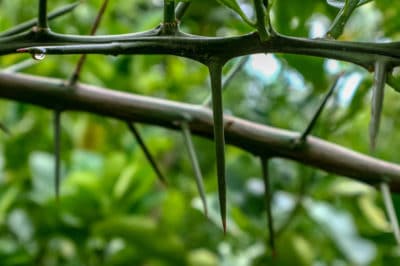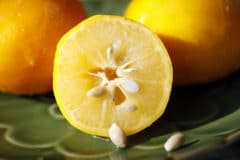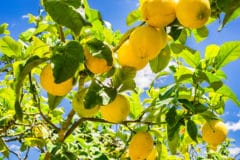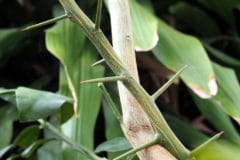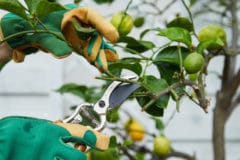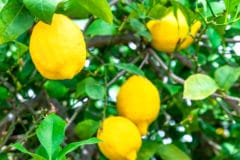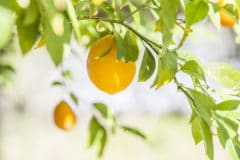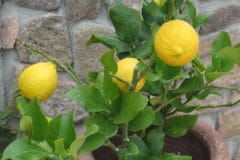Why Most Lemon Trees Have Thorns
It’s simple. Nothing is more likely to steer hungry animals away from a lemon tree’s succulent leaves and fruit than a mouthful of thorns. This is especially true for young lemon trees (Citrus limon, USDA hardiness zones 9 through 11). As they get older, with tougher foliage and harder-to-reach fruit, the thorns often disappear.
Thornless Lemons
For most lemon tree varieties, thorns come with the territory. A few cultivars, however, have been bred to be thornless or nearly so:
- ‘Eureka,’ a spreading 8- to 10-foot tree, produces large, tangy and exceptionally aromatic lemons all year long.
- ‘Improved Meyer’ grows 6 to 10 feet tall, with purple-tinged, white blossoms in spring and fall. Its medium-sized, yellow-orange fruit has smooth, thin skin and extremely juicy, mild pulp.
- ‘Berna’ is a Spanish variety reaching 20 feet tall. Its pebbly, bright-yellow fruit ripens in winter.
Expert gardener’s tip: If you’re concerned about thorns, stay away from the cultivars ‘Lisbon,’ ‘Genoa’ and ‘Ponderosa.’
Grafted Lemon Trees and Thorns
To compensate for their extreme frost sensitivity, commercial growers graft lemon trees onto hardier rootstock such as the very thorny trifoliate orange (Poncirus trifoliata). If you have one of these grafted trees, don’t be alarmed to see thorny shoots sprouting from its base.
As long as you remove them promptly, these suckers won’t be a problem. But if you let them grow, they’ll deprive your tree of water and nutrients while eventually wrapping it in an impenetrable thicket.
Dealing with Thorns
If your lemon tree hasn’t outgrown its thorns — or you don’t want to wait to see if it will — take matters into your own well-protected hands and remove them yourself. Like pruning its regular branches, pruning thorns won’t harm the tree.
Make the job as painless as possible with a long-sleeved shirt and forearm-length leather gloves. Hold a branch in one hand and work your way from the base to the tip, snipping the thorns as you go.
Expert gardener’s tip: Use a swivel-headed, long-handled pruner to grab and secure out-of-reach branches so you can pull them lower and remove the thorns.
